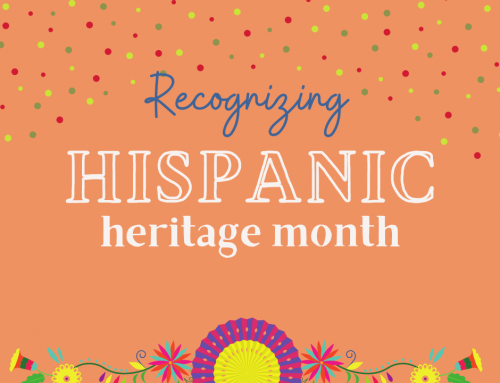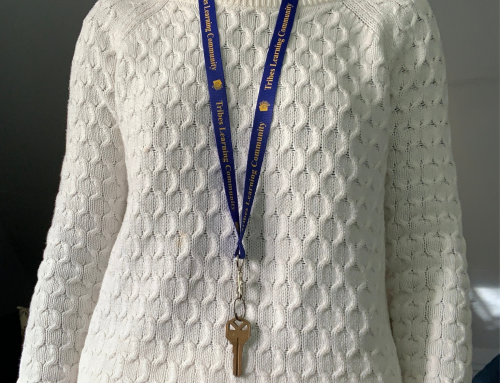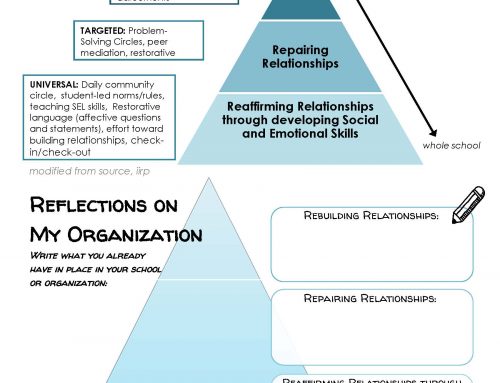by Tribes Trainer Miles Madison & Ms. Norah Sullivan Wilson ~
The International School of Brussels (ISB) Early Childhood Center is one of four divisions of ISB. There is a total of between 250 – 300 students ranging in age from 2 ½ to 8 years of age. It is truly an international school, with over 40 countries represented and almost that many home languages spoken. Instruction in our independently developed curriculum is delivered in English. The mission statement of ISB is “everyone included, challenged and successful in order to develop international citizens and independent learners.”
The Early Childhood Center has spent the last two years exploring the Tribes Learning Communities process and is beginning to implement it. The school year of 2008-2009 was the first year that Tribes was first introduced. Ms. Norah Sullivan Wilson, a Kindergarten teacher, as part of a Master’s of Education thesis, studied the effects of Tribes on this international community. Below is a summary of her findings.
THE WHAT:
The research was guided by the following three questions. These questions stemmed from the desire to study the appropriateness, or lack thereof, of Tribes in an international school setting.
- What defines a successful classroom community in the ECC?
- What aspects of Tribes have been successful and/or unsuccessful for building communities?
- What adaptations, if any, should be made to Tribes to make it appropriate and successful in the ECC?
THE WHO and the THE HOW:
Over the course of the school year teaching staff and students of the ECC were surveyed through anonymous questionnaires. In addition, a smaller number of teachers and students were interviewed in depth. Finally, classroom observations of Tribes and Community Building activities were made. Ms. Judith Fenton and Miles Madison, both Tribes trainers, were also interviewed.
- Teachers interviewed: 6
- Teachers observed: 6
- Teachers surveyed: 19
- Students interviewed: 6
- Students observed: 54
- Students surveyed: 54
- Judith Fenton and Miles Madison, Tribes Trainers
THE RESULTS:
What defines a successful classroom community in the ECC?
The students and teachers defined three key elements of a successful classroom community:
- Environment– The environment is described as “safe, respectful, welcoming and supportive.”
- People– The people are described as “friends, learners and individuals.”
- Learning– The learning is described in terms of “sharing, listening, questioning, playing, taking risks and being engaged and successful.”
What aspects of Tribes have been successful for building communities?
The students and teachers identified four key areas of success using the Tribes process.
1. Tribes is a valuable tool for building communities.
Everyone included
- Six out of 6 teachers interviewed described Tribes as a good tool for activities for the first Unit of Inquiry in the school, which concentrates on building communities.
- Six out of 6 teachers interviewed described Tribes activities as successful in helping students introduce themselves and get to know their other classmates.
- Four out of 6 teachers interviewed described Tribes as a process that allowed students to become a more cohesive group.
- The activity, Community Circle, was favored by 3 out of 6 teachers and recognized as very important in a daily routine for building communities.
- According to Judith Fenton and Miles Madison, it is imperative that everyone subscribe to common agreements of the process and that Community Circle happens every day as way to build community. They both also stated that Tribes allows for teachers and students to share a common language.
- When asked about her use of Tribes, one teacher responded, “I used the get to know you tools. It gave the children who came from other places the opportunities to share who they are. It has been part of my classroom when we use a new unit of study, when we need to learn a new way of working together.”
- When asked what was the most successful element of Tribes in her classroom, one teacher responded, “building a sense of community for any school, but particularly these kids who move around a lot. There is so much change in their lives. The school community is so important in their lives.”
2. Tribes encourages students and teachers to show respect for one another.
Everyone included
- Nineteen out of 19 teachers surveyed stated that Tribes allows for differentiation and is appropriate for many different learning styles.
- Five out of 6 teachers interviewed described Tribes activities as tools for problem-solving.
- Four out of 6 teachers interviewed stated that Tribes activities have helped to increase students’ ability to listen to one another. Forty out of 54 students perceive their classrooms to be respectful environments and 13 of the remaining 14 students perceive it to be respectful “sometimes.”
- According to both Tribes trainers, Tribes help students value and celebrate their differences.
- When asked if children in the classroom are respectful, one student responded, “Yeah by caring what they say and I also care for other people.”
- Another responded, “Yeah, because everyone has to be different. Well actually the whole world is one family. Every person. Cause people are different. Some people are older than you some people are younger. Some people have short hair some people have long hair. If we were all the same it would be a bit boring. If we were all the same.”
3. Tribes encourages students to take risks.
Everyone challenged
- Three out of 6 teachers described how Tribes activities give everyone the chance to participate, but allow each student the right to pass. Tribes activities encourage students to seek help from other students.
- Thirty-eight out of 54 students say they help group members. Fourteen out of the remaining 16 say they help.
- Forty out of 54 students say that group members help them. Thirteen out of the remaining 14 say they get help from group members.
- Thirty-seven out of 54 students feel it is acceptable for them not to understand something. Thirteen out of the remaining 17 students feel it is sometimes acceptable.
- Thirty-three out of 54 students feel it is acceptable for others not to understand something. Fourteen of the remaining 21 feel it is sometimes acceptable.
- Six out of 6 students interviewed described their feelings of their classroom environments with positive words. These include words such as “safe” “comfy” “excellent” “fun” and “happy.”
- Through observations, it was found that Tribes activities encourage students to ask questions.
- Through observations, it was found that Tribes activities encourage students to challenge themselves and each other through cooperative group work.
- When asked if it was acceptable if she did not understand, one student responded, “It’s good to learn that way. You ask questions and you get to know it better than other people sometimes.”
- When asked if it was acceptable if others did not understand, one student responded, “Yes, it is okay. You [the student who does not understand] can watch us.”
4. Cooperative Learning is engaging and fun.
Everyone successful
- Five out of 6 students interviewed preferred working in pairs or groups over working independently. Twenty-five out of 54 students surveyed say they like working in groups. Twenty-four of the remaining 29 like working in groups sometimes.
- Six out of 6 students interviewed described how working with others allowed them to learn new things and/or work more efficiently.
- When asked how he felt in his classroom, one student responded, “Good. Sweaty because I have been doing a lot of hard work and a lot of teamwork.”
- Another responded, “I feel kind of happy. ‘Exciting’ to learn new things.”
What aspects of Tribes have been unsuccessful or challenging for building communities?
What adaptations, if any, should be made to Tribes to make it appropriate and successful in the ECC?
The students and teachers of the ECC were able to identify several areas of challenge implementing the Tribes process.
1. Understanding and implementing the basic formation and function of a Tribes group
- Five of the six teachers interviewed did not attempt to make Tribes groups as the book describes, but did make groups in other ways.
2. Consistent use of daily activities and routines
- While all teachers interviewed used daily routines that resembled Tribes activities, 3 out of 6 did not use Tribes activities regularly.
- Three out of 6 teachers interviewed felt as though they did not use Tribes activities enough in any given period of time in order to do successful follow-up activities.
- Three out of 6 teachers interviewed explained their usage of Tribes in the beginning of the year, but said that it decreased throughout the year.
3. Regularly implementing reflection time
- Six out of 6 teachers interviewed expressed the importance of reflection time after activities.
- Three out of 6 teachers interviewed stated that they did not take the time to properly reflect after activities.
- Six out of 6 teachers interviewed believed reflection time is beneficial.
4. The name Tribes
- There was a general, inexplicable dislike for the name Tribes from 5 of the 6 teachers interviewed.
- These teachers believed that “Tribes” carried too many other connotations.
- The 5 teachers who did not like the name Tribes believed these activities should be referred to as something with the word community in it.
What should be the next steps for the ECC to continue building learning communities using the Tribes process?
We started the school year 2009-2010 with every teacher committing to be including a Community Circle in their daily schedule. Support for this was provided by the Tribes Trainer on-site and our Speech and Language Therapist, who sees direct links between the social communication skills developed in Tribes activities and those that she focuses on in her work. Furthermore, Tribes activities have been incorporated into every Faculty Meeting in order to provide models and support for continued and regular usage in classrooms. A school-wide focus on reflection has provided the impetus for including Tribes-like reflection questions to follow most lessons.
Overall, the impact of consistent language, an agreed upon set of behavioral norms (Tribes Agreements), daily Community Circles in all classrooms and an increase in students working together in small groups has been very powerful. Teachers, students and parents feel a sense of empowerment and belonging.


